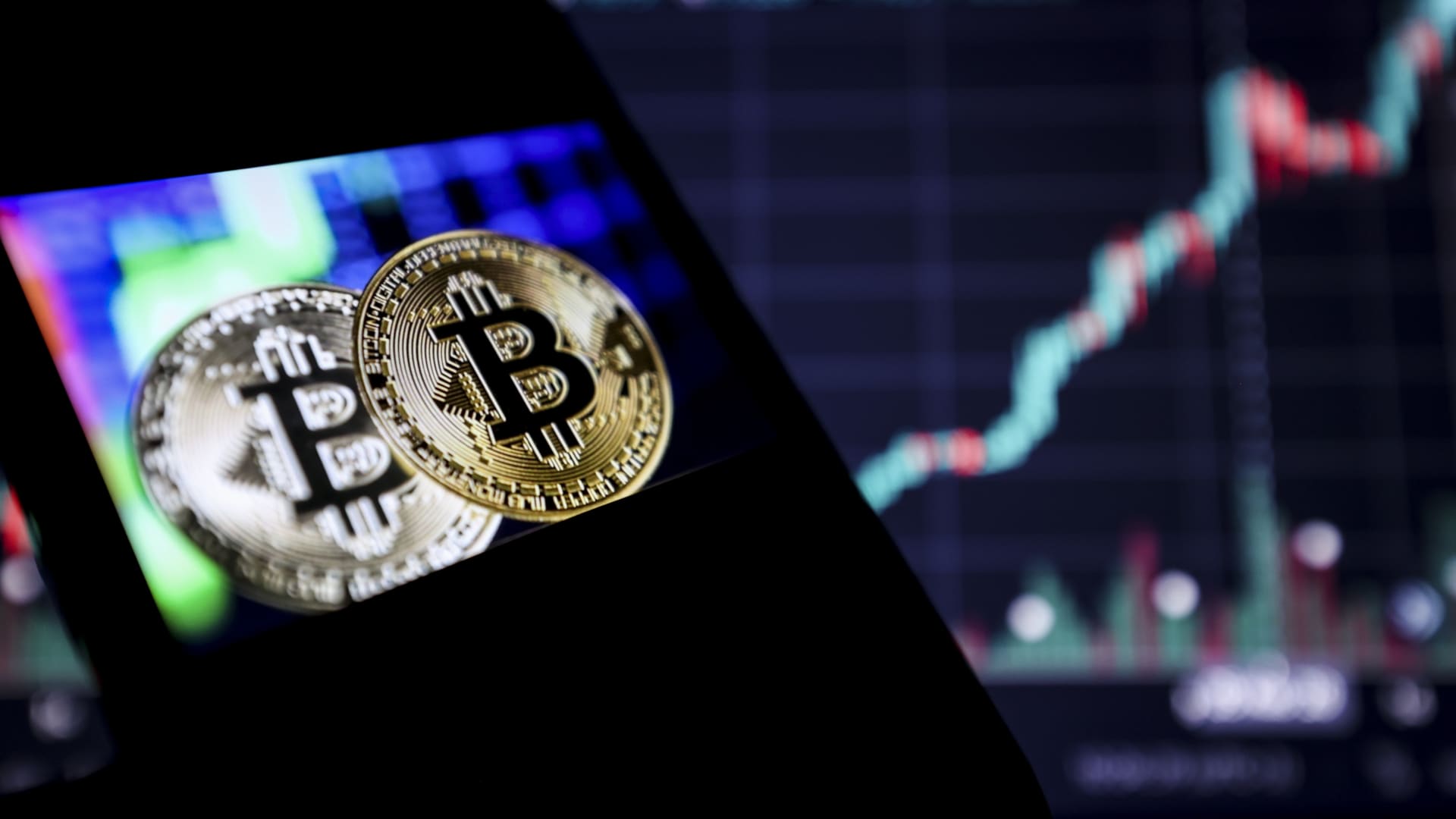Bitcoin rebounds, leading other cryptocurrencies higher, after its big dip over the weekend
Bitcoin bounced on Tuesday after slumping to fresh lows this past weekend.

Selim Korkutata | Anadolu Agency | Getty Images
Bitcoin climbed on Tuesday after a slew of negative headlines had pushed the cryptocurrency to a new 2022 low over the weekend.
The price of bitcoin jumped more than 7% to $21,617.70 around 10:50 a.m. ET, according to Coin Metrics. Over the weekend, it fell as low as $17,958.05. That was the lowest it has fallen since December 2020.
Meanwhile, ether rose more than 7% to $1,185.17.
The moves arrive on the heels of bearish headlines for the cryptocurrency industry that began with pressure from macroeconomic forces. Wholesale prices rose at a near record annual pace last week and the Federal Reserve hiked its benchmark interest rate by three-quarters of a percentage point, the biggest increase since 1994.
Cryptocurrency companies, including Coinbase and BlockFi, are laying off employees. Crypto lenders, which promise users high yields for depositing their digital coins, have been sparking insolvency fears.
Like in the stock market, investors are treading lightly around bear market bounces with some anticipating that cryptocurrencies could fall even further before seeing a meaningful rebound.
"Bitcoin's weekend dip was, to put it simply, not deep enough," said Yuya Hasegawa, a crypto market analyst at Japanese bitcoin exchange Bitbank. "The macro environment has not really changed from last week's FOMC meeting: there still has not been a clear sign of inflation coming down and the Fed may still drive the economy into recession by raising rates too aggressively or simply by failing to tame inflation."
Marcus Sotiriou, an analyst at the UK-based digital asset broker GlobalBlock, said bitcoin faces resistance at the $21,300 level. If the cryptocurrency can overcome that, he said, it could reach the next target of $23,500 as its short sellers get squeezed. A "short squeeze" happens when the price of a heavily shorted asset starts increasing, and short sellers are forced to purchase more of the asset to cover their positions.

 UsenB
UsenB 






















![Is ChatGPT Catching Google on Search Activity? [Infographic]](https://imgproxy.divecdn.com/RMnjJQs1A7VQFmqv9plBlcUp_5Xhm4P_hzsniPsfHiU/g:ce/rs:fit:770:435/Z3M6Ly9kaXZlc2l0ZS1zdG9yYWdlL2RpdmVpbWFnZS9kYWlseV9zZWFyY2hlc19pbmZvZ3JhcGhpYzIucG5n.webp)









